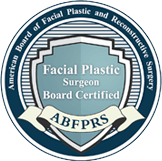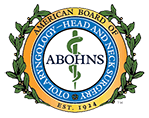
Scar revision can reduce the visibility of scars for a smoother, more natural appearance of the skin.

Dr. Matthew White uses a variety of surgical and non-surgical procedures to improve or reduce the appearance of scars. Scars are a normal result of the skin’s natural healing process and can form due to burns, acne, surgery, or accidental trauma. Multiple layers of skin are involved in the formation of a scar and once a scar has formed, it is typically considered permanent. Patients with facial scarring may even experience heightened degrees of disfigurement or diminished facial functionality.
Scars can take a very heavy physical and emotional toll, and have a significant effect on one’s confidence and self-esteem. Our facial plastic surgeon offers advanced treatments that can enhance both form and function of areas of the face and neck affected by scarring.
To learn more about scar revision procedures or to schedule a consultation with Dr. Matthew White, contact our office today.
Scar Revision Benefits
Scar revision procedures can improve functionality while also addressing aesthetic concerns. The benefits of scar revision include:
- Restoring lost function
- Improving or reducing the appearance of scars
- The availability of both surgical or non-surgical procedures
- The ability to treat a variety of scar types, including hypertrophic, keloid, and contracture scars
- Enhancing both appearance and self-confidence
Most Commonly Treated Scars
- Hypertrophic Scars: These scars manifest within the boundaries of an incision wound. Hypertrophic scars are typically thick, red, and raised in appearance.
- Keloid Scars: Though similar in appearance to hypertrophic scars, keloid scars generally extend beyond the boundaries of an incision or wound. Keloid scars are typically found on the earlobe, shoulder, or over the breastbone.
- Contracture Scars: These scars are the most severe form of scarring and typically arise as the result of serious burns. When burn patients lose a large amount of skin, the edges of the skin tend to “pull together” as the body tries to heal itself. This pulling of the skin and the resulting scar affects the adjacent muscles and tendons and can restrict normal movement.

Scar Revision Procedures
- Steroid Applications and Injections: Hypertrophic scars and keloid scars result from excess collagen production after a wound has already healed. Steroids are topically applied or injected into the scar to break down this excess collagen. This scar revision procedure is used to reduce itching and pain while diminishing redness and flattening hypertrophic and keloid scars.
- Silicone Gel Sheets: These clear silicone gel sheets are worn directly over the target area and are used to flatten hypertrophic scars.
- Z-Plasty and Tissue-Rearrangement Techniques: The purpose of these procedures is to reorient a scar. The scar and the surrounding skin are repositioned to follow natural lines and creases of the body, making the scar less noticeable and relieving the pressure caused by contracture scars.
- Dermabrasion: For deep lines or scars, this process can work to smooth out surface irregularities.
- Vascular Lesion Treatment: To improve the coloration of scars and reduce redness, the procedure shrinks the blood vessels that lead to the scar.
- Tissue Expansion: With this technique, the scar is surgically removed. Using a saline-filled balloon inserted beneath a portion of healthy skin near a scar, the skin is stretched over a period of several weeks to achieve an adequate amount of skin capable of covering the scarred area.
- Skin Grafts: Skin grafts can be very effective ways of restoring function to a severely scarred area. This technique uses healthy skin from another area of the body and transplants it to the injured area.
- Dermal Filler Injections: This technique utilizes collagen, a naturally occurring substance in the body that supports the structure of the skin, to fill in sunken scars.
- Laser Skin Resurfacing: To promote new skin growth, laser skin resurfacing removes the top layer of skin and reduces uneven scar surfaces.
The Recovery Process
Although Dr. White can reduce the appearance of scars and improve functionality in certain areas, scar revision patients should understand that scars are permanent and cannot be entirely eliminated. Sometimes a combination of treatments is necessary for optimal results. Keeping these expectations in mind, Dr. White can achieve wonderful outcomes for his patients.
Depending on the extent of the scarring, the downtime associated with the procedure will vary from patient to patient. Dr. White’s patients are typically able to return to their normal day-to-day lives within 1-2 days, though certain activities may remain restricted for a longer period of time.

Contact Dr. W. Matthew White
To schedule a consultation with Dr. White and learn how you can benefit from scar revision treatment, please contact our office today.










